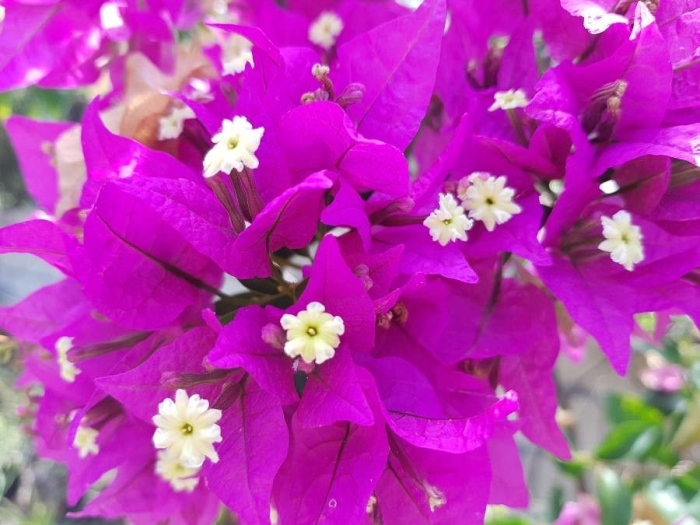Great Bougainvillea
(Bougainvillea spectabilis)
Great Bougainvillea (Bougainvillea spectabilis)
/
/

Joe Bloggs
CC BY-SA 4.0
Image By:
Joe Bloggs
Recorded By:
Copyright:
CC BY-SA 4.0
Copyright Notice:
Photo by: Joe Bloggs | License Type: CC BY-SA 4.0 | License URL: https://creativecommons.org/licenses/by-sa/4.0/ | Attribution: Joe Bloggs (cc-by-sa) | Rights Holder: Joe Bloggs | Publisher: PlantNet | Date Created: 2020-04-28T10:13:34Z | Title: Bougainvillea spectabilis Willd.: flower | Notes: Bougainvillea spectabilis Willd.: flower |























































Estimated Native Range
Summary
Bougainvillea spectabilis, commonly known as Great Bougainvillea, is a deciduous or semi-deciduous vine native to the coastal forests and sand dunes of Brazil. It can grow to a height of 15 to 40 feet (4.6 to 12.2 m) and often features heart-shaped leaves and thorny, pubescent stems. The true flowers are small, white, and inconspicuous, but they are surrounded by large, showy, brightly colored bracts that can be white, red, mauve, purple-red, or orange, which bloom intermittently throughout the year in warmer climates. The fruit is a small, dry, elongated achene that is not ornamentally significant.
Great Bougainvillea is celebrated for its vibrant bracts and is widely used in tropical and subtropical landscapes as a decorative plant. It can be trained to climb walls and trellises, used as a hedge, or allowed to sprawl as a ground cover. This plant thrives in full sun and requires well-drained, fertile soil. It is drought-tolerant once established and prefers dry conditions, making it suitable for xeriscaping. While it can be grown in hardiness zones 10-11, it is sensitive to frost and requires protection in cooler climates. Bougainvillea spectabilis is potentially invasive in some regions, so it is important to check local guidelines before planting.CC BY-SA 4.0
Great Bougainvillea is celebrated for its vibrant bracts and is widely used in tropical and subtropical landscapes as a decorative plant. It can be trained to climb walls and trellises, used as a hedge, or allowed to sprawl as a ground cover. This plant thrives in full sun and requires well-drained, fertile soil. It is drought-tolerant once established and prefers dry conditions, making it suitable for xeriscaping. While it can be grown in hardiness zones 10-11, it is sensitive to frost and requires protection in cooler climates. Bougainvillea spectabilis is potentially invasive in some regions, so it is important to check local guidelines before planting.CC BY-SA 4.0
Plant Description
- Plant Type: Shrub
- Height: 9-20 feet
- Width: 8-12 feet
- Growth Rate: Moderate, Rapid
- Flower Color: Cream, Orange, Pink, Purple, Red, White
- Flowering Season: Fall, Spring, Summer
- Leaf Retention: Deciduous, Semi-Deciduous
Growth Requirements
- Sun: Full Sun
- Water: Low
- Drainage: Medium
Common Uses
Bank Stabilization, Bee Garden, Bird Garden, Butterfly Garden, Drought Tolerant, Hummingbird Garden, Potted Plant, Salt Tolerant, Showy Flowers, Street Planting
Natural Habitat
Coastal forests and sand dunes
Other Names
Common Names: Três-Marias, Primavera, Tapirica, Roseira-Do-Mato, Stor Trillingblomma, Espinho-De-Santa-Rita, Ye Zi Hua, Buganvilia, 九重葛
Scientific Names: , Bougainvillea spectabilis, Bougainvillea brasiliensis, Bougainvillea peruviana, Bougainvillea speciosa, Bougainvillea virescens, Bougainvillea spectabilis var. parviflora, Bougainvillea spectabilis var. hirsutissima, Bougainvillea bracteata, Bougainvillea rubriflora
GBIF Accepted Name: Bougainvillea spectabilis Willd.